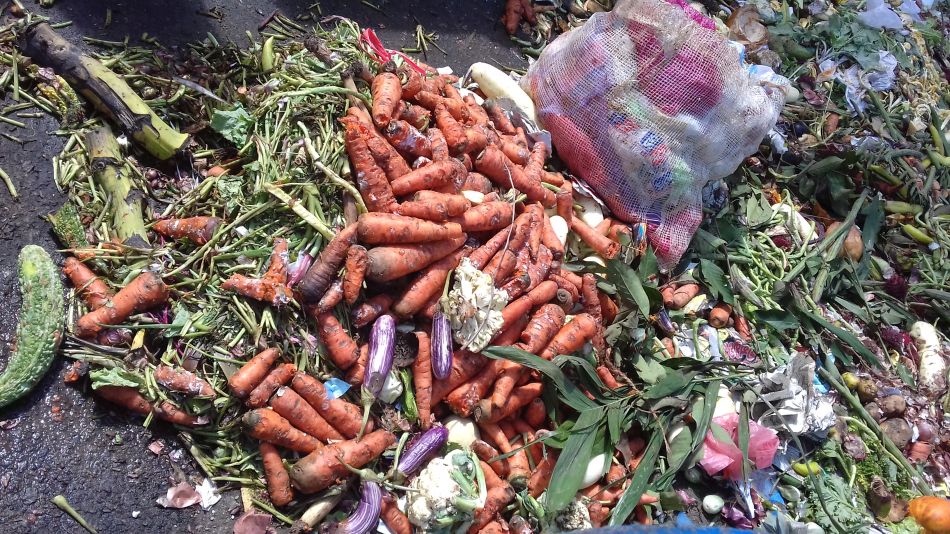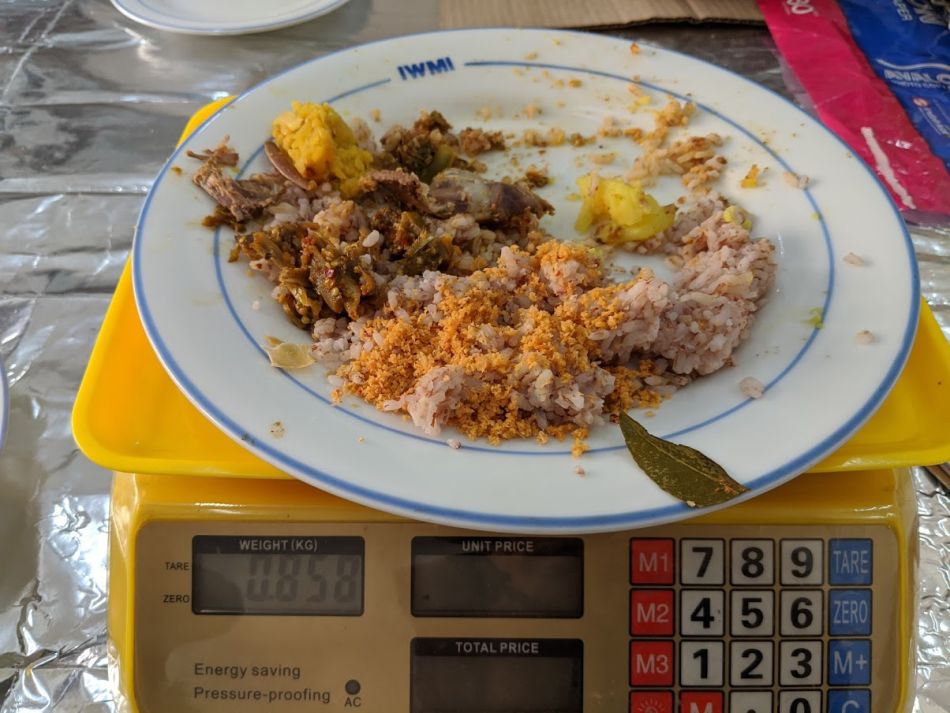By Mohamed Aheeyar and Nilanthi Jayathilake, IWMI
As we mark World Food Day, Sri Lanka is suffering from a food crisis. Despite our fertile, tropical isle employing a third of its people in agriculture, more than a fifth of Sri Lankans do not have sufficient food to live healthily, and over a third cannot afford a nutritious diet. Shrinking crop yields prompted by the (now reversed) 2021 chemical fertiliser ban; spiking prices driven by the spiralling cost of irrigation and transport arising from the fuel crisis; the fallout of the war in Ukraine; and a lack of state funds to pay for vital supplies have all contributed to this situation. The result is that, since 2018, the average monthly cost of a nutritious diet has soared by 156%.

If the causes of Sri Lanka’s food crisis are many and complex, one solution is relatively simple: we must cut food waste. Every day, our nation collectively throws away four tonnes of food, which affects the total volume of nutrients available and accessible for people to eat. Initiatives to prevent and reduce food waste therefore have the potential to ease the lives of those suffering from hunger and malnutrition, and contribute to meeting the United Nations Sustainable Development Goal 2 of ‘zero hunger’.
Of course, reducing food waste also saves the resources used to produce food, such as water, energy and fertiliser (and therefore, potentially, carbon emissions), and reduces subsequent impacts (including pollution from production and distribution, and greenhouse gas emissions from landfill). However, with little attention paid to waste by those involved in food supply chains, the gains to be had from cutting losses go unnoticed and unrecorded.
The International Water Management Institute (IWMI), with financial support from the Food and Agriculture Organization (FAO) of the United Nations, undertook a project to ascertain why, how much and where food is being wasted by different sectors in Sri Lanka.

Identifying the problem
We began with case studies of quantitative analysis at ten sites across five sectors – food services, wholesale markets, retailers, caterers and households – to understand the volume of food being wasted. At each site we identified the key sources of waste generation; separated, weighed and categorized food waste produced at those locations; differentiated the waste into edible and inedible portions; and, based on this data, identified strategies to reduce food waste in the future. For example, one major hotel that had been wasting around a third of the food it produced was able to cut its daily food waste from 540g to 200g per customer.
As well as making detailed assessments, we analysed existing national and local policies in the context of food waste, identified challenges and opportunities for city stakeholders, and undertook consultations and capacity development with multiple actors. This enabled FAO to develop a road map for preventing and reducing food waste, which was launched by the Government of Sri Lanka in 2021. Laying out strategies and business models to enhance food security by preventing, redistributing, reusing and recycling food waste, its recommendations and guidance will be implemented in due course by a National Steering Committee on Managing Food Loss and Food Waste established by the Ministry of Environment.
Developing solutions to enhance food security
Some ways to cut food waste outlined in the roadmap are already being put into practice. For example, many food banks have been set up in schools and other institutions, often informally by community groups as voluntary initiatives in these challenging times Importantly, the roadmap provides a strategic pathway to implementing these solutions more formally, such as through innovative public-private partnerships. There is no doubt that addressing food security – one of the greatest challenges facing our country and the world today – requires action from governments, private sector and communities alike. It is our intention that the roadmap serves as a tool to inform all stakeholder groups and support their decision-making processes as they negotiate the path to reducing food waste and enhancing food security
The hope is that, by next World Food Day, lower levels of food waste in Sri Lanka will mean more food is available, prices are more stable, and everyone has access to the nutrition they need to thrive.

